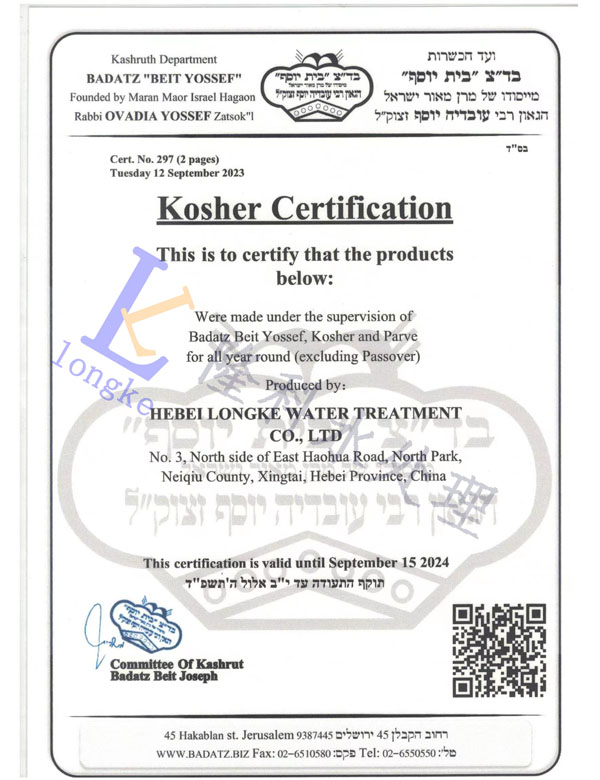polyacrylamide uses
The Versatile Applications of Polyacrylamide
Polyacrylamide, a synthetic polymer derived from acrylamide monomers, has garnered significant attention due to its diverse applications across various industries. With its high molecular weight, excellent water solubility, and ability to form gels, polyacrylamide is a crucial material in fields such as water treatment, agriculture, and the oil industry. This article delves into the multifaceted uses of polyacrylamide and its impact on modern practices.
One of the primary applications of polyacrylamide is in the wastewater treatment industry. It serves as a flocculating agent, facilitating the aggregation of suspended particles in water. When introduced to wastewater, polyacrylamide enhances the efficiency of sedimentation processes, leading to the removal of contaminants and improved water clarity. This application is particularly valuable in municipal water treatment plants and industrial wastewater facilities, where it helps meet regulatory standards and mitigate environmental impact.
The Versatile Applications of Polyacrylamide
The oil and gas industry also relies on polyacrylamide for various applications. It is commonly used as a polymer in enhanced oil recovery (EOR) methods. By injecting polyacrylamide into oil reservoirs, operators can increase the viscosity of the injected fluids, improving the displacement efficiency of oil trapped in porous rock formations. This method not only boosts production but also extends the life of aging oil fields. Additionally, polyacrylamide is employed in drilling fluids to stabilize boreholes and improve the efficiency of drilling operations.
polyacrylamide uses

Beyond these prominent sectors, polyacrylamide has found utility in the medical and cosmetic fields as well. In biomedicine, it is utilized in electrophoresis techniques for protein separation and analysis. This is critical for research and diagnostics, allowing scientists to study proteins’ structure and function more effectively. Furthermore, polyacrylamide gels are often used in the formulation of drug delivery systems, enabling controlled release and targeted therapy.
In the realm of cosmetics, polyacrylamide is frequently included in formulations for its thickening and stabilizing properties. It helps improve the texture of creams, lotions, and gels, ensuring a pleasant application experience for consumers. Moreover, its film-forming ability enhances the longevity and performance of cosmetic products, making it a popular ingredient in many personal care formulations.
Despite its widespread usage, it is essential to acknowledge the safety concerns associated with polyacrylamide. The acrylamide monomer is considered a potential neurotoxin and carcinogen. Consequently, the polymerization process is crucial to convert acrylamide into the safer polyacrylamide form. Regulatory agencies in many countries strictly monitor the use and disposal of polyacrylamide to minimize risks to human health and the environment.
In conclusion, polyacrylamide is a versatile polymer with a wide array of applications spanning from wastewater treatment to agriculture, oil recovery, and beyond. Its unique properties make it an invaluable tool in addressing some of today’s critical challenges, particularly in resource management and environmental protection. As research continues to evolve, the potential for innovative applications of polyacrylamide is promising, paving the way for sustainable practices across various industries. With responsible use and thorough understanding, polyacrylamide can contribute to advancements that benefit society as a whole.
-
LK-319 Special Scale And Corrosion Inhibitor For Steel Plants: Advanced Solutions for Industrial Water SystemsNewsAug.22,2025
-
Flocculant Water Treatment: Essential Chemical Solutions for Purification ProcessesNewsAug.22,2025
-
Isothiazolinones: Versatile Microbial Control Agents for Industrial and Consumer ApplicationsNewsAug.22,2025
-
Scale Inhibitor: Key Solutions for Water System Scale PreventionNewsAug.22,2025
-
Organophosphonates: Versatile Scale Inhibitors for Industrial Water SystemsNewsAug.22,2025
-
Scale and Corrosion Inhibitor: Essential Chemical Solutions for Water System MaintenanceNewsAug.22,2025





